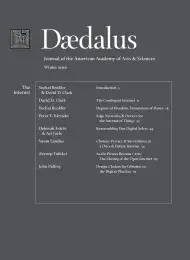Choices: Privacy & Surveillance in a Once & Future Internet
The Internet's original design provided a modicum of privacy for users; it was not always possible to determine where a device was or who was using it. But a combination of changes, including “free” Internet services, increasing use of mobile devices to access the network, and the coming “Internet of Things” (sensors everywhere) make surveillance much easier to achieve and privacy more difficult to protect. Yet there are also technologies that enable communications privacy, including address anonymizers and encryption. Use of such technologies complicate law-enforcement and national-security communications surveillance, but do not completely block it. Privacy versus surveillance in Internet communications can be viewed as a complex set of economic tradeoffs–for example, obtaining free services in exchange for a loss of privacy; and protecting communications in exchange for a more expensive, and thus less frequently used, set of government investigative techniques–and choices abound.
Electronic communications create challenges. In enabling citizens to connect at a distance, they would appear to loosen governmental control. But signals can be eavesdropped on and recorded, and communications surveillance gives tremendous power. Even if the communication itself is encrypted, communications metadata–the who, when, where of a message–are not. Anyone who can collect metadata has vast opportunity to know who is where and connecting with whom.
The ability to remotely eavesdrop has existed for at least as long as electronic communications. Because a signal can be plucked from the air, rather than visibly tapped into, radio is easier to eavesdrop on than are wired communications. In many ways, the Internet has made such surveillance easier still. The tremendous flexibility afforded by the network– the medium supports applications as diverse as search engines, maps, online social networks (OSNs), Twitter, YouTube, Netflix, Uber, and MOOCs (Massive Open Online Courses)–makes the Internet indispensable to citizens and nations alike, and its signals . . .
